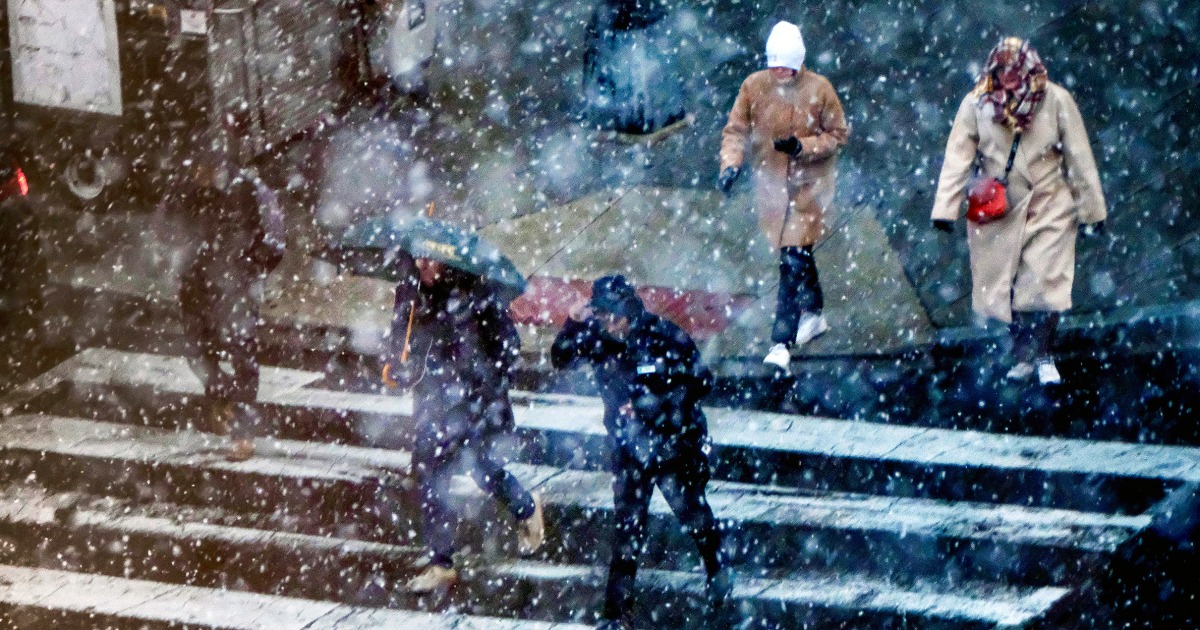Winter Storm Warning: Understanding the Threat to 60 Million Across the Plains and Mid-Atlantic
A powerful winter storm is on the horizon, posing significant risks to over 60 million people in the United States. As severe weather conditions target the Plains and Mid-Atlantic regions, forecasters are sounding the alarm. Residents in these areas are encouraged to prepare for potentially hazardous conditions, including heavy snowfall, strong winds, and freezing temperatures. This article delves into the details of the storm, its expected impacts, and crucial safety tips for those in the affected regions.
The Current Situation
As meteorologists monitor the development of this winter storm, alerts have been issued across multiple states, indicating that severe weather is imminent. The storm is expected to bring:
- Heavy snowfall: Accumulations could reach over a foot in some areas.
- Blizzard conditions: Strong winds could create whiteout situations, making travel extremely dangerous.
- Freezing rain: Icy conditions may develop, leading to hazardous roadways and power outages.
Weather experts are particularly concerned about the rapid intensity of this storm. The National Weather Service (NWS) is advising residents to remain vigilant and keep abreast of updates as the storm system approaches.
Geographic Impact
The storm’s trajectory will impact a broad swath of the country, particularly affecting:
- The Northern Plains: States like North Dakota, South Dakota, and Nebraska can expect the heaviest snow accumulations.
- The Midwest: Areas in Iowa and Minnesota will face high winds and heavy snow, leading to dangerous travel conditions.
- The Mid-Atlantic: States such as Pennsylvania, Maryland, and Virginia are bracing for a mix of snow and freezing rain.
This wide-reaching impact underscores the importance of preparedness, as many residents will be affected in varying degrees.
Understanding Winter Storm Warnings
Winter storm warnings are issued when severe winter weather is expected to disrupt daily activities significantly. The NWS defines these warnings based on several criteria, including:
- Snowfall accumulation: Typically, five or more inches of snow within a 12-hour period.
- Ice accumulation: Significant ice accumulation that can lead to power outages and hazardous travel conditions.
- Wind speeds: Wind gusts exceeding 35 mph, especially when combined with heavy snowfall.
For those living in the affected areas, it is crucial to understand these warnings and take them seriously. Ignoring such alerts can lead to dangerous situations, including being stranded during a storm.
Preparing for the Storm
As residents brace for the impending winter storm, preparation is key to ensuring safety. Here are some essential steps to take:
- Stock up on supplies: Ensure you have enough food, water, and medications to last at least three days. It’s wise to have non-perishable items like canned goods and dry snacks.
- Check your heating system: Ensure your heating system is functioning correctly, and consider having alternative heat sources like space heaters (with safety precautions).
- Prepare your vehicle: Keep your gas tank full, and make sure your vehicle is winter-ready with good tires and an emergency kit that includes blankets, snacks, and a flashlight.
- Stay informed: Follow local news channels and the NWS for the latest updates on the storm. Weather apps can also provide timely alerts.
By taking these precautions, residents can better navigate the challenges posed by severe winter weather.
Staying Safe During the Storm
Once the storm hits, staying safe becomes the top priority. Here are some safety tips to consider:
- Avoid travel: If possible, stay home and avoid unnecessary travel until conditions improve. If you must go out, let someone know your route and expected arrival time.
- Stay indoors: Keep windows and doors closed to maintain heat and prevent drafts. If you lose power, use flashlights instead of candles to reduce fire risks.
- Monitor weather updates: Keep a battery-operated radio or use your phone to check weather updates periodically.
- Assist neighbors: Check on elderly or disabled neighbors who may need help preparing or staying safe during the storm.
By following these guidelines, individuals and families can mitigate risks and enhance their safety during winter storms.
The Aftermath: Recovery and Cleanup
Once the storm passes, the focus will shift to recovery. Clean-up efforts can be challenging, but with proper planning, the process can be more manageable:
- Shoveling snow: Clear driveways and sidewalks carefully. Use proper techniques to avoid injury.
- Inspect your property: Check for any damage to roofs, windows, or fences caused by heavy snow or ice.
- Stay alert for hazards: Watch for downed power lines and report them to local authorities immediately.
Communities often come together during recovery efforts. Participate in local initiatives to help those in need, such as the elderly or families facing difficulties due to the storm.
Conclusion
The impending winter storm poses a significant risk to over 60 million people across the Plains and Mid-Atlantic regions. By understanding the storm’s potential impacts, staying informed, and preparing adequately, residents can protect themselves and their families. Remember, safety should always be the priority, and by taking proactive steps, we can weather this storm together. Stay safe and warm!
See more Your Daily Weather



